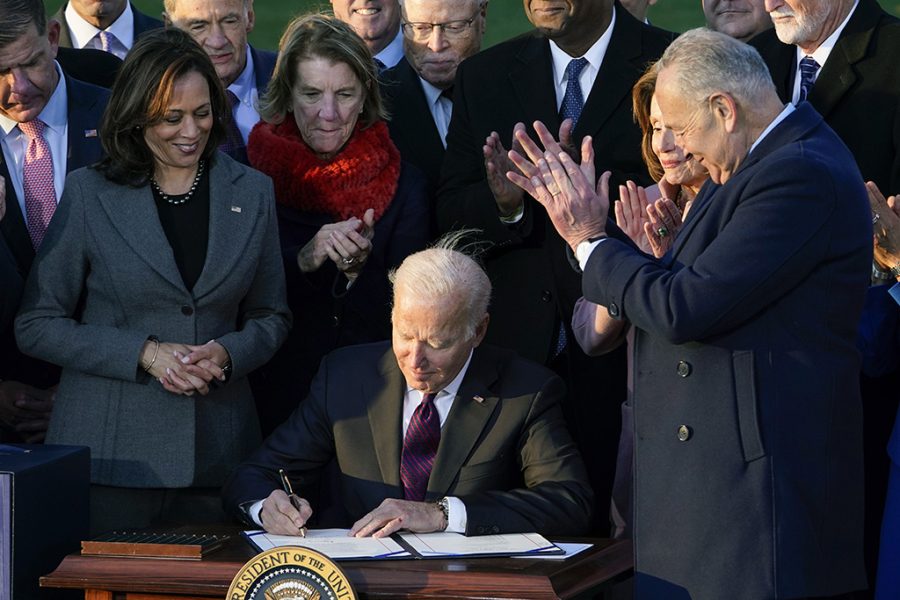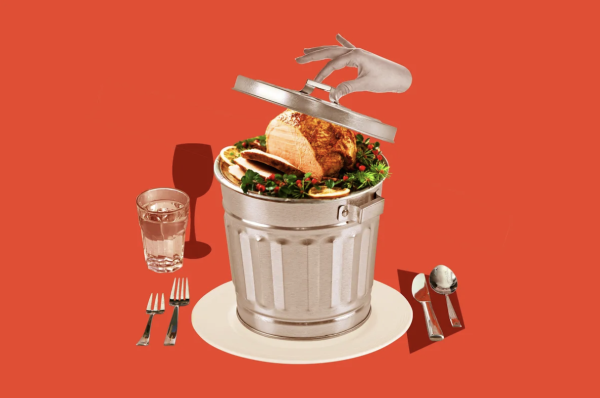Here’s What’s in President Biden’s $1 Trillion Infrastructure Bill
Photo courtesy AP
President Joe Biden signs the $1.2 trillion bipartisan infrastructure bill into law during a ceremony on the South Lawn of the White House in Washington, Monday, Nov. 15, 2021.
The House passed one of the biggest infrastructure bills in U.S. history this Friday. President Biden’s $1 trillion package aims to rebuild and maintain the U.S.’s country’s public works system. Specifically, the money will go to the construction and renovation of highway systems, railroads, ports, power grids, broadband internet, and much more. The bill was met with opposition from both sides of the aisle, such as Democrats who threatened to vote against the bill unless Biden also moves forward with the Build Back Better bill, which included additional spendings that were excluded from the infrastructure bill. However, the hefty bill was eventually cleared on a 228-206 vote. Here is what the budget will be going to:
Public Transit
The package will allow $39 billion to expand and improve our current transit system. The main goals are to modernize public transit by making them more accessible to the elderly and disabled. Additionally, the bill aims to repair more than 24,000 buses, 5,000 rail cars, and 200 stations, along with thousands of miles of train tracks. Lastly, money will be spent on purchasing newer models of low-emission buses. This marks the largest federal investment in public transits and in passenger rails.
Roads and Bridges
The bill will provide $110 billion for repairing and constructing roads, highways, bridges, and other large transportation projects. According to the White House, about 173,000 miles of America’s highways are currently in need of maintenance. This massive investment will be important to improving the quality of the US highway and road system. It is also reported that the $40 billion invested in bridges will be the largest investment in bridges. Finally, there are $16 billion and $11 billion set aside for major construction projects and transportation safety, respectively.
Internet Access
To increase the reach of high-speed internet, the bill includes $65 billion for broadband infrastructure, much less than the initial $100 billion that Biden had wanted. The main goal is to ensure that many Americans living in rural or under resourced areas will receive access to cheap and high-speed internet. This can also benefit the learning experience of students living in rural areas with less internet access. One in four households will be expected to be eligible for a $30 per month subsidy to pay for internet bills.
Water Systems
The lack of access to clean and safe water has been a pressing issue in many parts of the country. The bill will provide $55 billion to improve the current water infrastructure, replacing many old pipes and service lines to avoid problems like lead contamination. This upgrade will also help better protect the pipes from natural disasters such as floods and droughts. The bill’s investment marks the largest investment in drinking water ever.
Electric Grid
To protect against frequent power outages and expand the current system, $65 billion will be used to build new, environment-friendly power lines. The upgrade will be a part of the efforts to expand and implement renewable energy, such as carbon capture technology, which can reduce emissions by over 80%.
Biden’s infrastructure bill also provides funds for electric cars, airports, road safety, and environmental cleanups. However, the Congressional Budget Office(CBO) estimates that this bill will add over $250 billion to the national budget deficit over the next 10 years. Lawmakers had originally planned to pay this by using extra funds from Covid-19 relief. They also planned to rely on money from the Economic Injury Disaster Loan program, the termination of unemployment benefits, and new Superfund fees. However, these funds will still leave the majority of the debt.
Despite the debt that will come with this bill, the contents of this bill promise to reach every corner of the country. With massive amounts of money pouring into the country’s public works, underserved communities are set to be the ones who will benefit the most from this bill. The money will modernize public transportation for those with needs, expand internet access to rural areas, upgrade water supplies to communities suffering from the water crises, and improve our electric grids to prevent power outages.

Grade: 12
Years on Staff: 3
Why are you writing for the Flintridge Press?
I want to use my affinity for writing in the Press to spread information...










